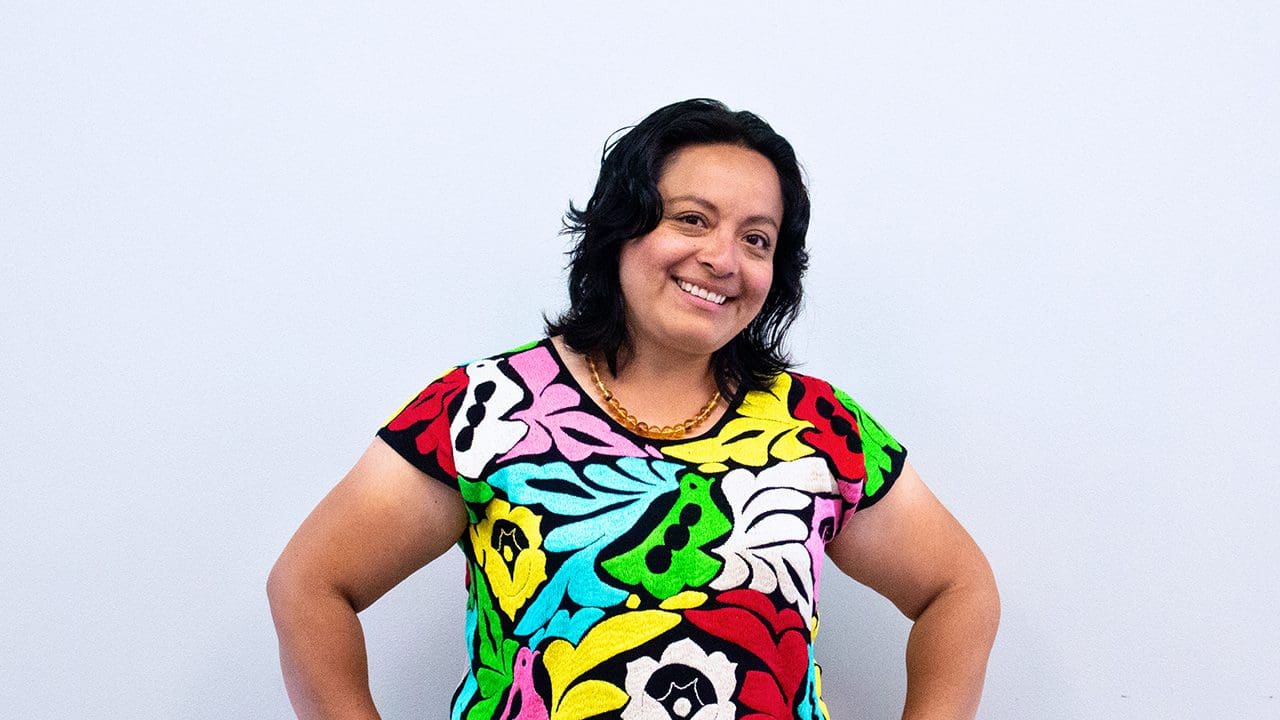Meet the Artists

Perla Miriam Salgado Zamorano
Xochimilco, Mexico City
Miriam's alebrijes:
Tochtli, Tarascòn, Osita Emilia, Ma’ax, Juki, Chamak, Blue
Meet Miriam:
Miriam wants everyone to know that “Alebrijes are a gift from Mexico to the world”. Miriam’s favorite pattern (she calls it “abanico”) is painted on all her pieces. This pattern is her way to depict the ripples formed when she throws a stone at the lake where she lives (Xochimilco). All of Miriam’s pieces have “Viva Mexico” written on them along with a Mexican flag.
Conoce a Miriam:
Miriam quiere que todos sepan que “Los alebrijes son un regalo de México para el mundo”. El patrón favorito de Miriam (al que ella llama “abanico”) está pintado en todas sus piezas. Este patrón es su manera de representar las ondas que se forman cuando lanza una piedra al lago donde vive (Xochimilco). Todas las piezas de Miriam tienen escrito “Viva México” junto con una bandera mexicana.

Edgar Israel Camargo Reyes
Iztapalapa, Mexico City
Edgar's alebrijes:
Jonás, Pepe, Mykel, La Abuela, Goliath
Meet Edgar:
Edgar’s creative process has changed over time. Before college, Edgar started working on his pieces without sketching, mainly because most of the designs Edgar comes up with appear to him in dreams or come from movies he watches. Once he started his college education, he developed the habit of sketching and making maquettes before the actual piece. Edgar defines his style as organic and natural. He believes that geometric shapes are too rigid. On the contrary, when you work with a more organic design, it is as if your hand flows with the paint.
Conoce a Edgar:
El proceso creativo de Edgar ha cambiado con el tiempo. Antes de la universidad, Edgar comenzaba a trabajar en sus piezas sin hacer bocetos, principalmente porque la mayoría de los diseños que se le ocurren aparecen en sus sueños o vienen de películas que ve. Una vez que comenzó su educación universitaria, desarrolló el hábito de hacer bocetos y maquetas antes de la pieza final. Edgar define su estilo como orgánico y natural. Cree que las formas geométricas son demasiado rígidas. Por el contrario, cuando trabajas con un diseño más orgánico, es como si tu mano fluyera con la pintura.

Roberto Carlos Martínez Tecillo
Tlahuac, Mexico City
Roberto's alebrijes:
Tlaltecuhtli, Huexolotl
Meet Roberto:
Roberto defines his style as colorful with lots of fantasy. He doesn’t follow a definite pattern or line form. For Roberto, the piece itself talks to him and directs him. It tells him what colors, shapes, and patterns to use. Roberto uses vivid, bright, and vibrant colors on his pieces because he wants people to leave happy after looking at them. Roberto’s creative process varies. Sometimes he starts by sketching; sometimes, he dreams of designs for his pieces.
Conoce a Roberto:
Roberto define su estilo como colorido y lleno de fantasía. No sigue un patrón o forma de línea definidos. Para Roberto, la pieza misma le habla y lo dirige. Le dice qué colores, formas y patrones usar. Roberto utiliza colores vivos, brillantes y vibrantes en sus piezas porque quiere que la gente se vaya feliz después de verlas. El proceso creativo de Roberto varía. A veces comienza haciendo bocetos; otras veces, sueña con diseños para sus piezas.

Alejandro Camacho Barrera
Xochimilco, Mexico City
Alejandro's alebrijes:
Patapez, Lacuarium, Guajito, Gigi
Meet Alejandro:
Alejandro strives to depict and represent endangered species within his alebrijes design. He believes that we should pay attention to the symbiosis these species effect when going extinct. Alejandro’s style is fantastic realism. He combines the natural world with the human-made world. He also believes that science connects both art and nature. His task is to connect the natural design found around us (plants, textures, animal skin) with the one created by humans (graphs, lines, geometry).
Conoce a Alejandro:
Alejandro se esfuerza por representar y retratar especies en peligro de extinción dentro de sus diseños de alebrijes. Cree que deberíamos prestar atención a la simbiosis que estas especies efectúan al estar en peligro de extinción. El estilo de Alejandro es realismo fantástico. Combina el mundo natural con el mundo creado por el hombre. También cree que la ciencia conecta tanto el arte como la naturaleza. Su tarea es conectar el diseño natural que nos rodea (plantas, texturas, piel de animales) con el creado por los humanos (gráficos, líneas, geometría).

Alberto Moreno Fernández
Iztapalapa, Mexico City
Alberto's alebrijes:
Totolt, El Kokoro, El Barón, Asmej
Meet Alberto:
Alberto believes that we do not live out of the art; instead, we should live for the art. Alebrijes (art in general) have saved him; they have provided him with a creative and emotional outlet. Your hard work and creativity are the source of happiness. Alberto also refers to his mother as the most significant influence on his creativity. Alberto’s mother is originally from Puebla, a state in Mexico rich in arts, crafts, culture, and traditions. She passed her deep appreciation for nature and the animals around him.
Conoce a Alberto:
Alberto cree que no vivimos fuera del arte; en cambio, deberíamos vivir para el arte. Los alebrijes (el arte en general) lo han salvado; le han proporcionado una vía de escape creativa y emocional. Tu arduo trabajo y creatividad son la fuente de felicidad. Alberto también menciona a su madre como la influencia más significativa en su creatividad. La madre de Alberto es originaria de Puebla, un estado de México rico en artes, artesanías, cultura y tradiciones. Ella le transmitió su profunda apreciación por la naturaleza y los animales que lo rodean.
Content courtesy of Gail Borden Public Library. For exclusive use by Northern Illinois University.
